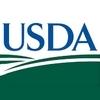Explore all the information on
Swine gut health
Pigs are exposed to various challenges such as weaning, environmental stressors, unhealthy diet, diseases and infections during their lifetime which adversely affects the gut microbiome. The inability of the pig microbiome to return to the pre-challenge baseline may lead to dysbiosis resulting in the outbreak of diseases. Therefore, the maintenance of gut microbiome diversity, robustness and stability has been influential for optimum intestinal health after perturbations. Nowadays human and animal researches have focused on more holistic approaches to obtain a robust gut microbiota that provides protection against pathogens and improves the digestive physiology and the immune system.
The swine gut microbiome is a complex and dynamic ecosystem harboring immensely diverse microbiota including bacteria, viruses, archaea, and fungi that ideally reside symbiotically in the gut of host animals. Among the microorganisms, the number of bacteria outnumbers other microorganisms.
The microbiome robustness, the maintenance of diverse and functional microbiota in GIT is crucial for effective swine production. The microbiome robustness depends on the diversity of the microbiome, so it is not enough just to have the presence of a few different beneficial microbes. Accordingly, new strategies are required to manipulate the gut microbiome to prevent or revert unhealthy states caused by perturbations.
1. Introduction Diet induces a change in the microbial ecology and fermentation end products in the gut, which in turn, influences the nutritional, physiological, and immunological functions of pigs (Brestoff and Artis, 2013; Jha et al., 2019). Cereal grains and different agro-industrial coproducts represent major portions of the pig diet which contains a considerable amount of fermentable carbohydrates like resistant starch (RS) and non-starch polysaccharides (NSP) such as AX...
Comments : 0
Recommendations: 0
...
Comments : 1
Recommendations: 0
...
Comments : 0
Recommendations: 0
1. Introduction Deoxynivalenol (DON), commonly known as vomitoxin, is a potent mycotoxin produced by the fungus Fusarium graminearum, and its presence in wheat, corn, and barley crops can lead to them being downgraded to livestock feed grade. Pigs, and in particular young piglets, are poorly tolerant to DON contamination. Although extremely high doses of contamination in feed (20 mg/kg feed) will induce vomiting [1,2], swine will tolerate lower-level feed contamination to...
Comments : 0
Recommendations: 0
Fleur Aarsse, Specialist in Animal Nutrition, sums up the key points of her presentation during the 2nd Asia Pacific Silvateam Technical Seminar in Bangkok, focusing on the prevention of post-weaning diarrhea in pigs using Silvafeed® Nutri P blend of plant extracts...
Comments : 3
Recommendations: 1
Annafe Perino, Product Manager, Novus International Southeast Asia & Pacific, explains why protein is good but also problematic, and the benefits of using a protease enzyme (CIBENZA DP100) in young animals to improve gut health...
Comments : 0
Recommendations: 3


Mycotoxins semiannual survey of mycotoxin in feed in 2023 Taiwan - Second Half
Suggested link
Effective since July 1, 2020, China fully implemented the antibiotics-ban regulation, that is, in commercial feed, it is no longer allowed to add antibiotics for the purpose such as disease prevention and growth promotion. Feed production...
Comments : 2
Recommendations: 2
...
Comments : 0
Recommendations: 0


Study of Effectiveness of Hygen Pro® Strept Phytobiotic versus Clinical Strains of Streptococcus Suis of Porcine Origin
Suggested link
...
Comments : 3
Recommendations: 4
1. Introduction Quercetin, as the foremost representative of flavonols, has been extensively investigated for its beneficial effects on health [1]. With regard to the gastrointestinal tract, quercetin received a lot of attention in treating chronic intestinal inflammation. Different mechanisms, including protection against oxidative stress, preservation of epithelial barrier function, and immunomodulatory properties in the gut, are believed to be involved [2,3]. These biological...
Comments : 0
Recommendations: 0
At weaning, piglets suffer from immunological, environmental, nutritional and social stress, consequently affecting the gut health and growth performance. Supplementation of probiotics is considered as one of the strategies to maintain the intestinal health and minimize the negative effects of the weaning stress in piglets. Probiotic, Bacillus amyloliquefaciens CECT 5940 is a natural spore - forming bacteria, which supports gut health and improves growth performance in poultry....
Comments : 0
Recommendations: 0
Implications The host DNA in faeces presumably originates from gut cell losses. This development of a non-invasive assessment method is potentially a novel indirect measurement of gut cell losses, although further validation experiments are required. A yeast-inclusion diet significantly reduced pig DNA in faeces and therefore may reduce gut cell losses. Turnover of gut cells contributes to feed efficiency; therefore, assessment of host DNA in faeces could potentially, following...
Comments : 0
Recommendations: 0
1. Introduction Weaning is the most challenging event in modern pig production, which often results in reduced feed intake, decreased growth, increased risks of post-weaning diarrhea (PWD) and mortality in newly weaned piglets [1–3]. Thus, pig producers in Europe, particularly in Denmark, heavily depend on dietary supplementation of pharmacological doses (2500 to 3000 ppm) of zinc oxide (ZnO) to avert weaning related diarrhea and associated piglet mortality. However, due...
Comments : 0
Recommendations: 0
Taiwan is an island state in East Asia and located in the tropical and subtropical zone. During summer, the weather is hot and humid, and these factors will cause the intensive farming livestock to stay in high pressure and uncomfortable state, hence resulting in feed intake reduce and disease.
Weaned pigs are more sensitive to inter and external environments changes comparing to growing pigs or finishing pigs. During the weaning stage, piglets are facing a series of physiological...
Comments : 0
Recommendations: 2


Mycotoxins semiannual survey of mycotoxin in feed in 2023 Taiwan - Second Half
Suggested link
In these past years, the concept of food safety has become increasingly more evident in the food production, mainly when it is related with the export of products of animal origin, which is a huge challenge to the industries to ensure food safety. The demand for healthier and more natural ingredients in food gains strength in Brazil and the world, with investment in technology and industry adhesion. The technology in the manufacture of the products is fundamental and integrates...
Comments : 0
Recommendations: 1
Recently, Pig Farming suffered a major impact on world production. In September 2018, the African Swine Fever Virus (ASFV) was detected in subsistence pigs in China and Romania, and in wild boars in Belgium. Brazil was directly affected by the effect of the ASFV crisis. In the first quarter of 2019, Brazilian exports of pork had China as their main destination, representing 24.9% of total Brazilian exports and approximately 33,635 tons of pork in natura. The increase in export demand...
Comments : 0
Recommendations: 0


Study of Effectiveness of Hygen Pro® Strept Phytobiotic versus Clinical Strains of Streptococcus Suis of Porcine Origin
Suggested link
...
Comments : 0
Recommendations: 0
...
Comments : 0
Recommendations: 2





.jpg&w=3840&q=75)







.mp4&w=3840&q=75)




.mp4&w=3840&q=75)






